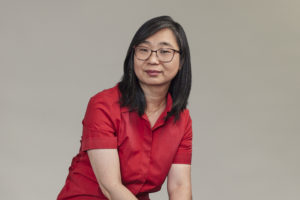
Professor Regina Lee, PhD (U of Toronto), P.Eng
Professor Regina Lee, PEng, is Professor of Space Engineering at the Department of Earth and Space Science and Engineering (ESSE), Lassonde School of Engineering at York University. Her current research involves developing nanosatellite technologies. Professor Lee has a passion for engaging youth to discover their potential through scientific problem solving and in turn enrich the diversity of ideas and perspectives within the engineering field.
PhD Candidates
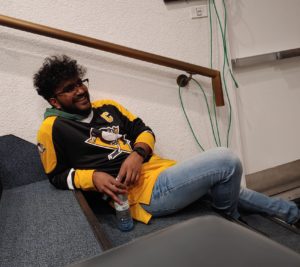 Vithurshan, a Ph.D. candidate, specializes in Space Situational Awareness (SSA) and space sustainability, focusing on advanced optical systems to monitor and mitigate space debris. He has contributed to projects like SPACEDUST, S.O.B.E.R., and RSONAR I & II, collaborating with the Canadian and European Space Agencies as part of his master's thesis, designing systems for Resident Space Object imaging and detection. Passionate about outreach, he co-wrote and directed Satellites & You, which was showcased at the Ontario Science Centre, blending research with storytelling to promote orbital sustainability. Connect with him on Linkedin.
Vithurshan, a Ph.D. candidate, specializes in Space Situational Awareness (SSA) and space sustainability, focusing on advanced optical systems to monitor and mitigate space debris. He has contributed to projects like SPACEDUST, S.O.B.E.R., and RSONAR I & II, collaborating with the Canadian and European Space Agencies as part of his master's thesis, designing systems for Resident Space Object imaging and detection. Passionate about outreach, he co-wrote and directed Satellites & You, which was showcased at the Ontario Science Centre, blending research with storytelling to promote orbital sustainability. Connect with him on Linkedin.
Akash Chauhan (Physics) 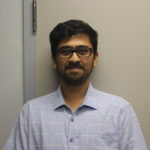 Akash is currently a Ph.D. candidate in Physics and Astronomy at York University. His thesis revolves around the application of microphotonics technology in a space setting, specifically in microsatellites. Photonics allows one to create miniaturized optical circuits that have a variety of applications ranging from remote sensing, inertial sensing, quantum computing, optical communication, biophotonics, and telecommunication. He is currently focusing on two technologies, the first being the interferometric fiber optic gyroscope, since it has the potential of being a solution to reliable, long term inertial sensing for microsatellites using no moving parts, unlike commonly used MEMS gyroscopes. The second is an optical phased array for inter-satellite optical communication. The optical phased array is a solution for beam steering with no moving parts, which increases reliability while reducing the size and cost relative to traditional mechanical solutions. In addition to his research interests, his academic interests include cosmology, quantum mechanics, and general relativity. In his spare time, he enjoys photography, cooking and listening to D&D podcasts. Find Akash on Linkedin.
Akash is currently a Ph.D. candidate in Physics and Astronomy at York University. His thesis revolves around the application of microphotonics technology in a space setting, specifically in microsatellites. Photonics allows one to create miniaturized optical circuits that have a variety of applications ranging from remote sensing, inertial sensing, quantum computing, optical communication, biophotonics, and telecommunication. He is currently focusing on two technologies, the first being the interferometric fiber optic gyroscope, since it has the potential of being a solution to reliable, long term inertial sensing for microsatellites using no moving parts, unlike commonly used MEMS gyroscopes. The second is an optical phased array for inter-satellite optical communication. The optical phased array is a solution for beam steering with no moving parts, which increases reliability while reducing the size and cost relative to traditional mechanical solutions. In addition to his research interests, his academic interests include cosmology, quantum mechanics, and general relativity. In his spare time, he enjoys photography, cooking and listening to D&D podcasts. Find Akash on Linkedin.
Vidushi Jain (Space Engineering) 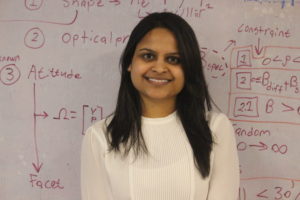 Vidushi completed her undergraduate degree in Space Engineering from York University. In 2017, she started her master’s studies with professor Franz Newland where her objectives were working on a small satellite mission named DESCENT, as well as her thesis which focused on developing a standard for small satellite operations. She successfully defended her masters in 2019 and joined the Nanosatellite laboratory as a PhD candidate under Dr. Regina lee. Based on her previous knowledge of satellite operations, satellite telemetry analysis, and ground operations she wants to explore anomaly detection in the domain of small satellites using machine learning techniques. When Vidushi is not in the lab she likes to explore different cuisines, travel and relish social gatherings.
Vidushi completed her undergraduate degree in Space Engineering from York University. In 2017, she started her master’s studies with professor Franz Newland where her objectives were working on a small satellite mission named DESCENT, as well as her thesis which focused on developing a standard for small satellite operations. She successfully defended her masters in 2019 and joined the Nanosatellite laboratory as a PhD candidate under Dr. Regina lee. Based on her previous knowledge of satellite operations, satellite telemetry analysis, and ground operations she wants to explore anomaly detection in the domain of small satellites using machine learning techniques. When Vidushi is not in the lab she likes to explore different cuisines, travel and relish social gatherings.
Warren Soh (Earth and Space Science) 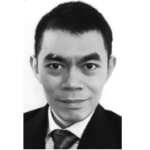 A seasoned space project manager, mission and systems engineer leading multi-disciplinary teams for over two decades. Cognizant of balancing cost, schedule and technical performance for successful technical task execution. Experienced in complete space system life cycle from capture management, requirements and verification development, mission and systems engineering analysis, systems budgets and design, planning, procedure development, manufacturing, assembly, integration, test, launch support, early operations and commissioning. Specializing in spacecraft missions, systems, Attitude Orbit Determination and Control systems (AODCS), Guidance and navigation, Kalman filtering. Programs: Quantum mission, WildFiresat mission, optical intersatellite link point and acquisition, Radarsat Constellation Mission flagship platform, exoplanet instrument and microsatellite, lunar rover subsystems, small Mars landed instrument, International Space Station micro-isolation vibration system, Space Situational Awareness, highly elliptical orbit onboard navigation algorithms, Earth observation smallsat and Gossamer Spacecraft. A licensed Professional Engineer (PEO), senior member of the American Institute of Aeronautics and Astronautics (AIAA), university student cubesat subsystem advisor and community sports volunteer. Continuously exploring new ideas to realize visions.
A seasoned space project manager, mission and systems engineer leading multi-disciplinary teams for over two decades. Cognizant of balancing cost, schedule and technical performance for successful technical task execution. Experienced in complete space system life cycle from capture management, requirements and verification development, mission and systems engineering analysis, systems budgets and design, planning, procedure development, manufacturing, assembly, integration, test, launch support, early operations and commissioning. Specializing in spacecraft missions, systems, Attitude Orbit Determination and Control systems (AODCS), Guidance and navigation, Kalman filtering. Programs: Quantum mission, WildFiresat mission, optical intersatellite link point and acquisition, Radarsat Constellation Mission flagship platform, exoplanet instrument and microsatellite, lunar rover subsystems, small Mars landed instrument, International Space Station micro-isolation vibration system, Space Situational Awareness, highly elliptical orbit onboard navigation algorithms, Earth observation smallsat and Gossamer Spacecraft. A licensed Professional Engineer (PEO), senior member of the American Institute of Aeronautics and Astronautics (AIAA), university student cubesat subsystem advisor and community sports volunteer. Continuously exploring new ideas to realize visions.
MSc Candidates
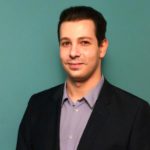 Gabriel joined the Nanosatellite Research Laboratory in 2020 under the Lassonde Undergraduate Research Award (LURA) and the Technologies for Exo-Planetary Science (TEPS) CREATE program. His focus is on the star tracker-based detection and tracking of Resident Space Objects (RSO). This includes using machine learning to verify and improve current systems being developed in the laboratory. His academic interests include digital signal processing, satellite communication systems, and information theory. In his spare time, he enjoys playing guitar and chess, going camping and bike riding, as well as spending time with his family and friends. Find Gabriel on LinkedIn.
Gabriel joined the Nanosatellite Research Laboratory in 2020 under the Lassonde Undergraduate Research Award (LURA) and the Technologies for Exo-Planetary Science (TEPS) CREATE program. His focus is on the star tracker-based detection and tracking of Resident Space Objects (RSO). This includes using machine learning to verify and improve current systems being developed in the laboratory. His academic interests include digital signal processing, satellite communication systems, and information theory. In his spare time, he enjoys playing guitar and chess, going camping and bike riding, as well as spending time with his family and friends. Find Gabriel on LinkedIn.
 David Dobrzanski Joining the Nanosatellite Research Laboratory at York University in 2024 to pursue a Master's in Space Science under the supervision of Professor Regina Lee, David Dobrzanski's research explores short-wave infrared imaging of resident space objects for improved space situational awareness. David previously worked at Canadensys Aerospace as a project and AI&T engineer for an optical imaging system used on multiple lunar and LEO missions, after having graduated from York's space engineering program in 2020. David's planetside interests include gardening, archery, rockhounding, and photography. Find David on Linkedin.
David Dobrzanski Joining the Nanosatellite Research Laboratory at York University in 2024 to pursue a Master's in Space Science under the supervision of Professor Regina Lee, David Dobrzanski's research explores short-wave infrared imaging of resident space objects for improved space situational awareness. David previously worked at Canadensys Aerospace as a project and AI&T engineer for an optical imaging system used on multiple lunar and LEO missions, after having graduated from York's space engineering program in 2020. David's planetside interests include gardening, archery, rockhounding, and photography. Find David on Linkedin.
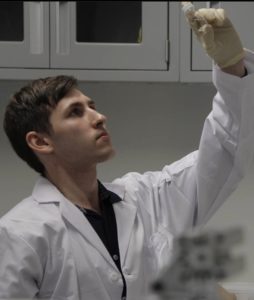 Constantine Papakonstantinou Prior to joining the Nanosatellite Laboratory, Constantine worked and trained at the Space Flight Laboratory specializing in payloads and communication subsystems for microsatellites. While at the nanosatellite laboratory, he will specialize in micro-photonics design. He looks forward to growing professionally and advancing technology for space flight through the opportunity. Constantine is avid about spending time exploring the natural world. When the laboratory instruments fall, the wanderlust rises. For Constantine, there is always a mountain to hike, a rock to climb and a river to cross.
Constantine Papakonstantinou Prior to joining the Nanosatellite Laboratory, Constantine worked and trained at the Space Flight Laboratory specializing in payloads and communication subsystems for microsatellites. While at the nanosatellite laboratory, he will specialize in micro-photonics design. He looks forward to growing professionally and advancing technology for space flight through the opportunity. Constantine is avid about spending time exploring the natural world. When the laboratory instruments fall, the wanderlust rises. For Constantine, there is always a mountain to hike, a rock to climb and a river to cross.
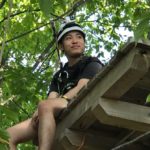

 Ruth Huang Ruth is a Masters student with the Nanosatellite Research Lab under the supervision of Dr. Regina Lee. Her work is on design for demise for re-entering RSOs, where she hopes to reduce the casualty risks posed by re-entering RSOs. In addition, she is also looking into the feasibility of imaging RSOs on a reentry path using cameras in lower and very low earth orbit. Her undergraduate was in Physics and Astrophysics completed at the University of Toronto. In her spare time, she enjoys reading, writing and theater.
Ruth Huang Ruth is a Masters student with the Nanosatellite Research Lab under the supervision of Dr. Regina Lee. Her work is on design for demise for re-entering RSOs, where she hopes to reduce the casualty risks posed by re-entering RSOs. In addition, she is also looking into the feasibility of imaging RSOs on a reentry path using cameras in lower and very low earth orbit. Her undergraduate was in Physics and Astrophysics completed at the University of Toronto. In her spare time, she enjoys reading, writing and theater.

Marianna Veltri Marianna is a Master's student in the Nanosatellite Research Lab at York University, under the supervision of Dr. Regina Lee. Her research focuses on multi-site observations for initial orbit determination (IOD) of RSOs, aiming to enhance the accuracy of IOD methods for collision prevention and other SSA applications. She also enjoys simulating multi-site observations and satellite scenarios using STK. Marianna completed her BSc in the Honours Physics and Astronomy program at York University, where her research centered on quasars and work with the university's observatory. In her free time, she enjoys reading, hiking, and spending quality time with friends and family.
Connor Humphries  Connor is a Master's student working under Regina Lee, with research focused on updating the lab's simulation environment to more accurately model noise and anomalous sensor behaviour to develop more robust synthetic data sets for AI training. His work aims to support collaborations with local and international research partners. His goal in SSA is to be the "World's Greatest Trashman". In his personal time, he just aims to try a lot of hobbies. To experience life, you need to experience all of life. Find Connor on LinkedIn.
Connor is a Master's student working under Regina Lee, with research focused on updating the lab's simulation environment to more accurately model noise and anomalous sensor behaviour to develop more robust synthetic data sets for AI training. His work aims to support collaborations with local and international research partners. His goal in SSA is to be the "World's Greatest Trashman". In his personal time, he just aims to try a lot of hobbies. To experience life, you need to experience all of life. Find Connor on LinkedIn.
Shane Ackerley  Shane is an artist, researcher, and educator currently pursuing an M.Sc. in Earth & Space Science. His thesis is focused on arts-based science outreach. He holds an Honours B.Sc. in Astrophysics with a Minor in Studio Art from Western University and has experience teaching high school math and physics both privately and through learning centres. Shane enjoys collecting old math & physics textbooks and seeing local art. To see some of his work, visit www.shaneackerley.com, or connect on LinkedIn..
Shane is an artist, researcher, and educator currently pursuing an M.Sc. in Earth & Space Science. His thesis is focused on arts-based science outreach. He holds an Honours B.Sc. in Astrophysics with a Minor in Studio Art from Western University and has experience teaching high school math and physics both privately and through learning centres. Shane enjoys collecting old math & physics textbooks and seeing local art. To see some of his work, visit www.shaneackerley.com, or connect on LinkedIn..
Undergraduate Research Assistants
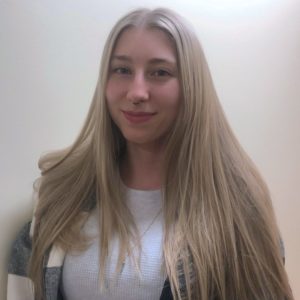 Marissa Myhre is a third-year space engineering student in the Lassonde School of Engineering at York University. She joined Dr. Lee’s lab in the winter of 2023 as an undergraduate research assistant. She is currently working on attitude determination through the use of startrackers for nano-satellite applications. Aside from space engineering, Marissa is an active skydiving coach with the Canadian Spot Parachute Association (CSPA). You can find Marissa on LinkedIn
Marissa Myhre is a third-year space engineering student in the Lassonde School of Engineering at York University. She joined Dr. Lee’s lab in the winter of 2023 as an undergraduate research assistant. She is currently working on attitude determination through the use of startrackers for nano-satellite applications. Aside from space engineering, Marissa is an active skydiving coach with the Canadian Spot Parachute Association (CSPA). You can find Marissa on LinkedIn
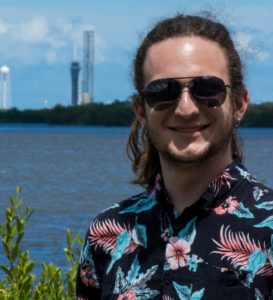 Ian Porto is a Third Year Space Engineering student. He joined the Nanosatellite Research Lab in February 2023. As an Undergraduate Research Assistant, his current research involves improving the accuracy of an Initial orbit determination using an Unscented Kalman Filter. He hopes to write a research paper on his summer research. He has a strong passion for everything within the space field. Outside of his research, he enjoys reading Fantasy books and live-action role-play.
Ian Porto is a Third Year Space Engineering student. He joined the Nanosatellite Research Lab in February 2023. As an Undergraduate Research Assistant, his current research involves improving the accuracy of an Initial orbit determination using an Unscented Kalman Filter. He hopes to write a research paper on his summer research. He has a strong passion for everything within the space field. Outside of his research, he enjoys reading Fantasy books and live-action role-play.You can find Ian on LinkedIn
Aiden Sanvido  Aiden Sanvido is a second-year software engineering student at McMaster University. He joined Dr. Regina Lee's Nanosatellite Research Laboratory in December 2022 as an Undergraduate Research Assistant. He is currently working with the team to create novel RSO tracking algorithms utilizing the RSONAR2 dataset. Aside from his summer research, he is also passionate about creating board games and developing personal software projects.
Aiden Sanvido is a second-year software engineering student at McMaster University. He joined Dr. Regina Lee's Nanosatellite Research Laboratory in December 2022 as an Undergraduate Research Assistant. He is currently working with the team to create novel RSO tracking algorithms utilizing the RSONAR2 dataset. Aside from his summer research, he is also passionate about creating board games and developing personal software projects.
Emilee Brown  Emilee Brown is a second-year chemical engineering student at McMaster University. She joined Dr. Regina Lee’s Nanosatellite Research Lab in May of 2024 as an Undergraduate Research Assistant. She is currently working with the team to identify and extract light curves from images obtained during the RSONAR2 Mission. Outside of engineering, Emilee enjoys crocheting and designing clothes.
Emilee Brown is a second-year chemical engineering student at McMaster University. She joined Dr. Regina Lee’s Nanosatellite Research Lab in May of 2024 as an Undergraduate Research Assistant. She is currently working with the team to identify and extract light curves from images obtained during the RSONAR2 Mission. Outside of engineering, Emilee enjoys crocheting and designing clothes.
Riyaz Alli  Riyaz Alli is a fourth-year undergraduate Space Engineering student and a licensed private pilot. He joined the Nanosatellite Research Lab in Summer 2025 and is currently contributing to the RSONAR IV re-flight mission, which builds on the heritage of the RSONAR III optical payload. His work involves spacecraft systems integration and optical instrumentation. Riyaz has strong interests in aerospace design, space missions, and aviation. Outside of the lab, he enjoys flying and learning more about space systems and mission design.
Riyaz Alli is a fourth-year undergraduate Space Engineering student and a licensed private pilot. He joined the Nanosatellite Research Lab in Summer 2025 and is currently contributing to the RSONAR IV re-flight mission, which builds on the heritage of the RSONAR III optical payload. His work involves spacecraft systems integration and optical instrumentation. Riyaz has strong interests in aerospace design, space missions, and aviation. Outside of the lab, he enjoys flying and learning more about space systems and mission design.
Find Riyaz on LinkedIn
Also working with us
 Rosmi Abraham is a post-doctoral research visitor working at the Nanosatellite Research Laboratory at York in collaboration with the National Research Council (NRC)-Nano Edmonton. She earned her PhD in Materials Engineering from the University of Alberta, building upon her MSc in Physics from the National Institute of Technology, Calicut, India, and her BSc in Physics from Mahatma Gandhi University, Kerala, India. With a strong foundation in fundamental physics, microfluidics, and data analysis, Rosmi has consistently demonstrated her expertise in Materials Engineering. She is an expert in physics and connects it to engineering applications. Her proficiency in project management is underscored by her involvement in over 20 projects with research and development companies and NRC collaborators. She has received several awards and honors, including the INSPIRE scholarship from the Government of India, the Prathibha Scholarship from the Kerala State Council for Science and Technology, and the University of Alberta Research Experience Award, among others. She is passionate about teaching and has 4 years of experience in teaching undergraduate courses at the University of Alberta.
Rosmi Abraham is a post-doctoral research visitor working at the Nanosatellite Research Laboratory at York in collaboration with the National Research Council (NRC)-Nano Edmonton. She earned her PhD in Materials Engineering from the University of Alberta, building upon her MSc in Physics from the National Institute of Technology, Calicut, India, and her BSc in Physics from Mahatma Gandhi University, Kerala, India. With a strong foundation in fundamental physics, microfluidics, and data analysis, Rosmi has consistently demonstrated her expertise in Materials Engineering. She is an expert in physics and connects it to engineering applications. Her proficiency in project management is underscored by her involvement in over 20 projects with research and development companies and NRC collaborators. She has received several awards and honors, including the INSPIRE scholarship from the Government of India, the Prathibha Scholarship from the Kerala State Council for Science and Technology, and the University of Alberta Research Experience Award, among others. She is passionate about teaching and has 4 years of experience in teaching undergraduate courses at the University of Alberta. Allumni
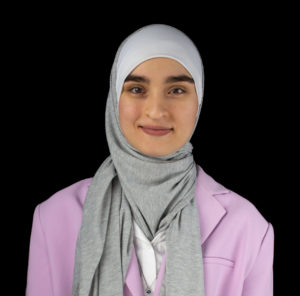 Randa has completed her BEng in Space Engineering at York University. She joined the nanosatellite research team in the summer of 2021 in pursuit of her MSc in Earth and Space Science degree and transferred to a PhD in summer of 2023. Her research mainly involves combining simulation and real data to generate images that can acquire RSO attitude and optical properties as well as to analyze light curves.
Randa has completed her BEng in Space Engineering at York University. She joined the nanosatellite research team in the summer of 2021 in pursuit of her MSc in Earth and Space Science degree and transferred to a PhD in summer of 2023. Her research mainly involves combining simulation and real data to generate images that can acquire RSO attitude and optical properties as well as to analyze light curves.
Perushan Kunalakantha 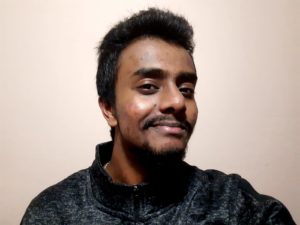 Perushan completed his BEng in Space Engineering at York University in 2022, and joined Dr. Regina Lee’s Nanosatellite Research Laboratory in the same year to pursue his MSc in Space Science. His previous undergraduate research experience under Dr. Lee serves as a foundation to his endeavours. His interests lie in space object detections and the utilization of space for natural resources. His hobbies include fitness, nutrition, and cars.
Perushan completed his BEng in Space Engineering at York University in 2022, and joined Dr. Regina Lee’s Nanosatellite Research Laboratory in the same year to pursue his MSc in Space Science. His previous undergraduate research experience under Dr. Lee serves as a foundation to his endeavours. His interests lie in space object detections and the utilization of space for natural resources. His hobbies include fitness, nutrition, and cars.
Michael Fairbrother
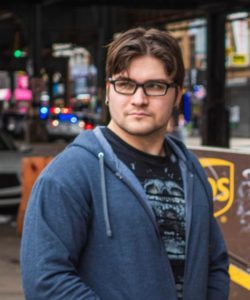
Michael completed his BSc in Physics and Astrophysics at the University of Toronto in 2021. He joined the nanosatellite research team in the summer of 2022 in order to pursue an MSc in Physics and Astronomy at York University. His research involves exploring the application of AI for satellite sensor tasking. His hobbies include working out and playing video games.
Andrea Vallecillo Baires 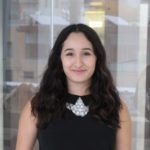 Andrea completed her bachelor’s degree in Biomedical Engineering at Ryerson University. She is currently pursuing a MSc of Science in Earth and Space Science at York University. She will be joining the RSO Detection team in the Nanosatellite Lab. Her focus will involve the application of Image Processing and Machine Learning algorithms to track resident space objects.
Andrea completed her bachelor’s degree in Biomedical Engineering at Ryerson University. She is currently pursuing a MSc of Science in Earth and Space Science at York University. She will be joining the RSO Detection team in the Nanosatellite Lab. Her focus will involve the application of Image Processing and Machine Learning algorithms to track resident space objects.
Michael Stewart 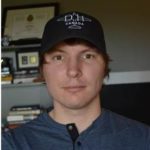 Michael completed his Bachelors of Engineering with a Specialization in Space Engineering in early 2021. He aims to support the Resident Space Object team with his background in Image Processing, working previously as an Undergraduate Research Assistant in the field, and as a hobbyist photographer.
Michael completed his Bachelors of Engineering with a Specialization in Space Engineering in early 2021. He aims to support the Resident Space Object team with his background in Image Processing, working previously as an Undergraduate Research Assistant in the field, and as a hobbyist photographer.
Hashir Jamil
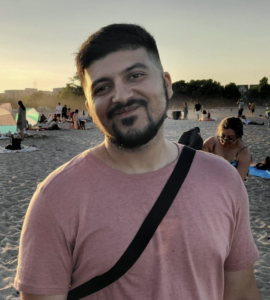 Hashir Jamil is a highly driven fourth-year software engineering student at York University, with a strong focus on big data and artificial intelligence. Recently joining the Nanosatellite Research Laboratory in May 2023, he has embarked on an exciting journey to help revolutionize space situational awareness. Hashir's current undertaking involves the implementation of an open source neural network on an FPGA, aimed at achieving resident space object detection. His unwavering passion lies in leveraging computational methods to solve complex problems, driven by a deep understanding of the underlying mathematical principles that govern these transformative techniques. Find Hashir on LinkedIn.
Hashir Jamil is a highly driven fourth-year software engineering student at York University, with a strong focus on big data and artificial intelligence. Recently joining the Nanosatellite Research Laboratory in May 2023, he has embarked on an exciting journey to help revolutionize space situational awareness. Hashir's current undertaking involves the implementation of an open source neural network on an FPGA, aimed at achieving resident space object detection. His unwavering passion lies in leveraging computational methods to solve complex problems, driven by a deep understanding of the underlying mathematical principles that govern these transformative techniques. Find Hashir on LinkedIn.
Hyunbin Yim
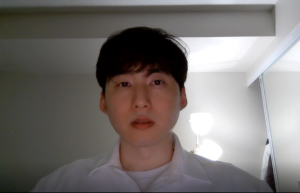 Hyunbin Yim is a third-year electrical engineering student at York University. He joined Dr. Regina Lee’s Nanosatellite Research Laboratory in January 2023 as an Undergraduate Research Assistant. He is currently working with the team on the RSONAR2 Mission. Aside from a research project, he is also working in York University Robotic Society(YURS) as an electrical team member and interested and passionate about finance and space fields, including robotics and satellites with AI.
Hyunbin Yim is a third-year electrical engineering student at York University. He joined Dr. Regina Lee’s Nanosatellite Research Laboratory in January 2023 as an Undergraduate Research Assistant. He is currently working with the team on the RSONAR2 Mission. Aside from a research project, he is also working in York University Robotic Society(YURS) as an electrical team member and interested and passionate about finance and space fields, including robotics and satellites with AI.
Andrew Lombardi
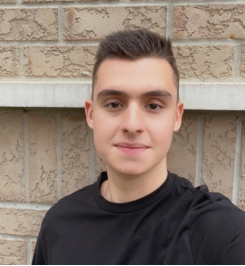 Andrew is a fourth-year space engineering student in the Lassonde School of Engineering at York University. He joined Dr. Regina Lee’s Nanosatellite Research Laboratory in Fall 2022 as an Undergraduate Research Assistant. He is currently working with the team on the RSONAR2 Mission. Aside from space engineering, he is also interested and passionate about space exploration and planetary science. Find Andrew on LinkedIn.
Andrew is a fourth-year space engineering student in the Lassonde School of Engineering at York University. He joined Dr. Regina Lee’s Nanosatellite Research Laboratory in Fall 2022 as an Undergraduate Research Assistant. He is currently working with the team on the RSONAR2 Mission. Aside from space engineering, he is also interested and passionate about space exploration and planetary science. Find Andrew on LinkedIn.
Sabrina Porrovecchio 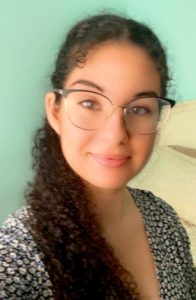 Sabrina is a fourth-year space engineering student at Lassonde School of Engineering, at
York University. She joined Dr. Regina Lee’s Nanosatellite Research Laboratory in Fall 2023 as an Undergraduate Research Assistant. Her work in the lab is to help research RSO tracking and apply it to a program to simulate space-based satellite tracking. Aside from space Engineering, she is passionate about planetary science and Mars exploration. She looks forward to continuing her education post-grad. You can find her on LinkedIn.
Sabrina is a fourth-year space engineering student at Lassonde School of Engineering, at
York University. She joined Dr. Regina Lee’s Nanosatellite Research Laboratory in Fall 2023 as an Undergraduate Research Assistant. Her work in the lab is to help research RSO tracking and apply it to a program to simulate space-based satellite tracking. Aside from space Engineering, she is passionate about planetary science and Mars exploration. She looks forward to continuing her education post-grad. You can find her on LinkedIn.
Timothy Barrett 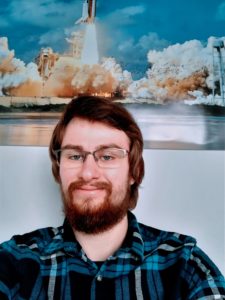 Tim is a fourth-year space engineering student at York University. He joined Dr. Regina Lee’s Nanosatellite Research Laboratory in May of 2022 as an Undergraduate Research Assistant. He is assisting the RSO detection team by developing a method for pre-sorting and categorizing RSO observation images using AI.
Tim is a fourth-year space engineering student at York University. He joined Dr. Regina Lee’s Nanosatellite Research Laboratory in May of 2022 as an Undergraduate Research Assistant. He is assisting the RSO detection team by developing a method for pre-sorting and categorizing RSO observation images using AI.
Jack Wawrow 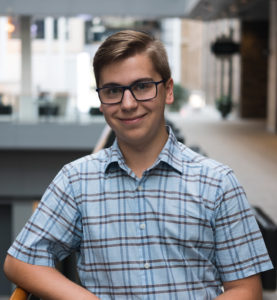 Jack is a fifth year Space Engineering student. He joined the Nanosatellite Research Lab in the summer of 2020 before completing a year-long co-op at Defence Research and Development Canada (DRDC) Ottawa in 2021. He returned to the Nanosatellite Research Lab in the summer of 2022 under the NSERC Undergraduate Student Research Award (USRA), where he is continuing to collaborate with DRDC Ottawa to develop an open-source photometric image processor for Space Situational Awareness (SSA). Outside of his work at the lab, he is the project manager and systems team lead for YorkU’s ESSENCE CubeSat mission, and enjoys watching F1 on the weekends. Connect with Jack on Linkedin.
Jack is a fifth year Space Engineering student. He joined the Nanosatellite Research Lab in the summer of 2020 before completing a year-long co-op at Defence Research and Development Canada (DRDC) Ottawa in 2021. He returned to the Nanosatellite Research Lab in the summer of 2022 under the NSERC Undergraduate Student Research Award (USRA), where he is continuing to collaborate with DRDC Ottawa to develop an open-source photometric image processor for Space Situational Awareness (SSA). Outside of his work at the lab, he is the project manager and systems team lead for YorkU’s ESSENCE CubeSat mission, and enjoys watching F1 on the weekends. Connect with Jack on Linkedin.
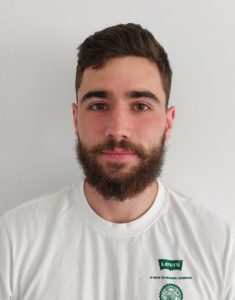 Romain is a 23-year-old officer at the French Air and Space Force Academy. He completed his end of studies internship in Dr. Regina Lee’s laboratory, and worked on objects detection and identification with YOLO algorithm. With that he is able to detect RSO on RSONAR images for example, but the end goal is to detect RSO on real FAI images. Back to France, Romain is now starting his training to become a transport pilot.
Romain is a 23-year-old officer at the French Air and Space Force Academy. He completed his end of studies internship in Dr. Regina Lee’s laboratory, and worked on objects detection and identification with YOLO algorithm. With that he is able to detect RSO on RSONAR images for example, but the end goal is to detect RSO on real FAI images. Back to France, Romain is now starting his training to become a transport pilot.
Ryan Clark 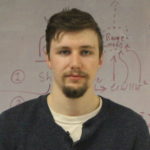 Ryan successfully defended his thesis in January 2022. He graduated in June 2018 with a BSc in Space Science and has been researching with the lab since his undergrad. His work is looking at space based optical detections of Resident Space Objects (RSO) to increase Space Situational Awareness (SSA). Ryan focus on the characterization of RSO’s using optical detections from space based star trackers. A simulation environment set up in MATLAB is used to replicate an RSO’s light curve’s to estimate shape, attitude and optical properties of the RSO. The end goal of this research is developing the technology to enable a passive space based SSA network using current and future in-situ star tracker cameras. When he is not spending his time in the lab working he loves exploring nature, watching football on Sundays and spending Saturdays with the boyz.
Ryan successfully defended his thesis in January 2022. He graduated in June 2018 with a BSc in Space Science and has been researching with the lab since his undergrad. His work is looking at space based optical detections of Resident Space Objects (RSO) to increase Space Situational Awareness (SSA). Ryan focus on the characterization of RSO’s using optical detections from space based star trackers. A simulation environment set up in MATLAB is used to replicate an RSO’s light curve’s to estimate shape, attitude and optical properties of the RSO. The end goal of this research is developing the technology to enable a passive space based SSA network using current and future in-situ star tracker cameras. When he is not spending his time in the lab working he loves exploring nature, watching football on Sundays and spending Saturdays with the boyz.
Shamil Samigulin 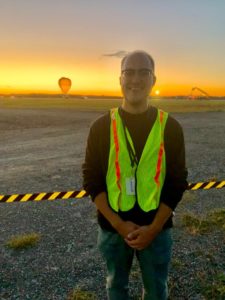 Shamil is a student in the BEng Electrical Engineering at York University. He had the privilege of joining the Nanosatellite Laboratory as an research assistant in Sept. 2018. Since then, he has contributed to the development of flight-ready firmware for a on-chip spectrometer research project and to the development of ADCS flight software for the ManitobaSat cubesat mission. His interests primarily lie in embedded systems design and embedded systems development. He is currently working on a FPGA based GNSS-R receiver which would be able to identify soil-moisture from GPS signal reflectometry. Find Shamil on Linkedin.
Shamil is a student in the BEng Electrical Engineering at York University. He had the privilege of joining the Nanosatellite Laboratory as an research assistant in Sept. 2018. Since then, he has contributed to the development of flight-ready firmware for a on-chip spectrometer research project and to the development of ADCS flight software for the ManitobaSat cubesat mission. His interests primarily lie in embedded systems design and embedded systems development. He is currently working on a FPGA based GNSS-R receiver which would be able to identify soil-moisture from GPS signal reflectometry. Find Shamil on Linkedin.
Siddarth Dave (Computer Engineering) 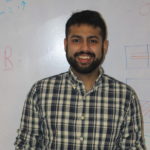 Siddharth completed his undergraduate degree in Computer & Electrical Engineering at Ryerson University in Toronto. In 2015 Siddharth joined the nanosatellite laboratory at the Lassonde School of Engineering with research focus on phased-array antenna for nanosatellite implementation in the context of space-situational awareness in LEO and successfully defended his Master’s thesis in 2018. Siddharth is currently pursuing his PhD leading the development of a star tracker-based deep learning implementation on FPGA for the detection and tracking of space-debris from a nanosatellite platform. Siddharth's research interests are in machine learning and deep learning, FPGA parallel processing for satellite applications, in-orbit on-board communications and interfaces like software defined radio, PCB design and layout and antennas. In his spare time, he enjoys cooking, coding, reading, riding his motorbike, and discussions around geopolitics, human behaviour and the future of human civilization. Contact Siddharth at sgbdave@gmail.com.
Siddharth completed his undergraduate degree in Computer & Electrical Engineering at Ryerson University in Toronto. In 2015 Siddharth joined the nanosatellite laboratory at the Lassonde School of Engineering with research focus on phased-array antenna for nanosatellite implementation in the context of space-situational awareness in LEO and successfully defended his Master’s thesis in 2018. Siddharth is currently pursuing his PhD leading the development of a star tracker-based deep learning implementation on FPGA for the detection and tracking of space-debris from a nanosatellite platform. Siddharth's research interests are in machine learning and deep learning, FPGA parallel processing for satellite applications, in-orbit on-board communications and interfaces like software defined radio, PCB design and layout and antennas. In his spare time, he enjoys cooking, coding, reading, riding his motorbike, and discussions around geopolitics, human behaviour and the future of human civilization. Contact Siddharth at sgbdave@gmail.com.
Lawrence Prophete 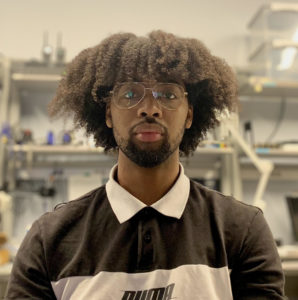 Lawrence Prophete is a third year Lassonde student. He is working with the nanosatelite lab as part of a collaborative project with the Air Quality lab at York University. Lawrence is currently working on the development of an Autonomous Pibal Tracking Device(APTD). Apart from his work with APTD, he is also interested in Photography, videography and industrial design.
Lawrence Prophete is a third year Lassonde student. He is working with the nanosatelite lab as part of a collaborative project with the Air Quality lab at York University. Lawrence is currently working on the development of an Autonomous Pibal Tracking Device(APTD). Apart from his work with APTD, he is also interested in Photography, videography and industrial design.
Nick Zonta 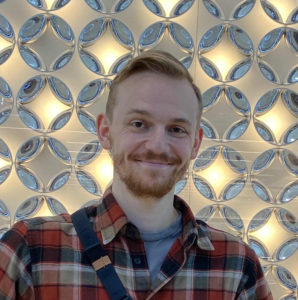 Nicholas completed his MSc specializing in Earth and Space Science as well as his BEng in Space Engineering at York University. His thesis research focused on chip level thermal control providing experimental and simulated values for the minimized settling of the current and future versions of a novel optical photonics array (OPA) design in collaboration with Honeywell Aerospace. He has been a part of the lab as both an undergraduate and graduate reseach assistant since 2018. Since then, he has collaborated on payload designs for both the DESCENT and IRIS cubesat missions. His strengths and interests lie in PCB and hardware design, CAD modelling and microelectronics. He most recently led the mechanical design and structural simulations for the current Resident Space Object Detection and Tracking (RSONAR2023) mission. Find Nick on LinkedIn.
Nicholas completed his MSc specializing in Earth and Space Science as well as his BEng in Space Engineering at York University. His thesis research focused on chip level thermal control providing experimental and simulated values for the minimized settling of the current and future versions of a novel optical photonics array (OPA) design in collaboration with Honeywell Aerospace. He has been a part of the lab as both an undergraduate and graduate reseach assistant since 2018. Since then, he has collaborated on payload designs for both the DESCENT and IRIS cubesat missions. His strengths and interests lie in PCB and hardware design, CAD modelling and microelectronics. He most recently led the mechanical design and structural simulations for the current Resident Space Object Detection and Tracking (RSONAR2023) mission. Find Nick on LinkedIn.
Diane Dubuisson (2022) 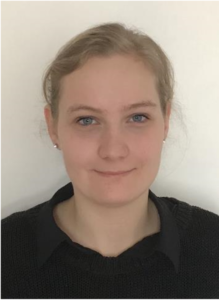 Diane is a 22-year-old officer at the French Air and Space Force Academy. Diane completed her end of studies internship in Dr. Regina Lee’s laboratory, and worked on streaks detection and identification. Diane created a simple algorithm that can characterize the position of these streaks. Back to France, Diane is now starting my training to become a fighter pilot.
Diane is a 22-year-old officer at the French Air and Space Force Academy. Diane completed her end of studies internship in Dr. Regina Lee’s laboratory, and worked on streaks detection and identification. Diane created a simple algorithm that can characterize the position of these streaks. Back to France, Diane is now starting my training to become a fighter pilot.
Peter Keum 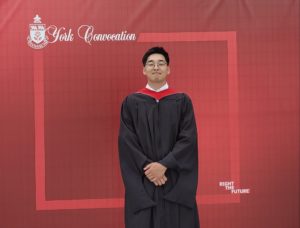 Peter is a BEng graduate in Aerospace Engineering from Carleton University. While his background focused on aircraft structures, his interest in nanosatellites was sparked with his capstone project, which involved building a Cubesat in a multi-disciplinary team. Peter’s current research focuses the simulation of a control moment gyroscope (CMG) attitude control for small satellites. The simulation will compare the performance of reaction wheel and CMG in given orbits and situations of the satellites. Outside research, Peter enjoys playing volleyball and badminton.
Peter is a BEng graduate in Aerospace Engineering from Carleton University. While his background focused on aircraft structures, his interest in nanosatellites was sparked with his capstone project, which involved building a Cubesat in a multi-disciplinary team. Peter’s current research focuses the simulation of a control moment gyroscope (CMG) attitude control for small satellites. The simulation will compare the performance of reaction wheel and CMG in given orbits and situations of the satellites. Outside research, Peter enjoys playing volleyball and badminton.
Alexander Frias, PhD (Ryerson) 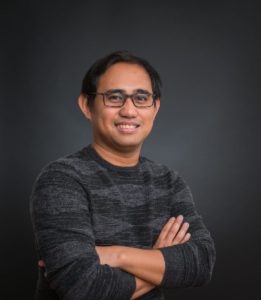 Dr. Alexander Frias is a KASI-York Research Fellow working with Dr. Regina Lee and Dr. Jaejin Lee. He obtained his Ph.D. degree in Aerospace Engineering at Ryerson University in Toronto, Canada. Currently, Dr. Frias is working as an Attitude Control System Engineer for the SNIPE Mission at Korea Astronomy and Space Science Institute (KASI). The SNIPE Mission aims to study the small scale magnetospheric and ionospheric plasma structures using four 6U-sized cubesat flying in multi-formation in low-Earth orbit. His work on the KASISat includes: testing of FM sensors, systems engineering, developing time-optimal detumbling control, and underactuated control. Prior to KASI, he worked at Microsat Systems Canada, Inc. as a Research Engineer to develop a lightweight CMG-based ACS and at Messier-Dowty as Lead Design Engineer to develop a data-acquisition system for landing gear studies. His expertise includes spacecraft dynamics and control, systems engineering, mechanical design, and commercial research and development. He enjoys practicing and teaching martial arts, hiking, traveling, and playing RPG boardgames.
Dr. Alexander Frias is a KASI-York Research Fellow working with Dr. Regina Lee and Dr. Jaejin Lee. He obtained his Ph.D. degree in Aerospace Engineering at Ryerson University in Toronto, Canada. Currently, Dr. Frias is working as an Attitude Control System Engineer for the SNIPE Mission at Korea Astronomy and Space Science Institute (KASI). The SNIPE Mission aims to study the small scale magnetospheric and ionospheric plasma structures using four 6U-sized cubesat flying in multi-formation in low-Earth orbit. His work on the KASISat includes: testing of FM sensors, systems engineering, developing time-optimal detumbling control, and underactuated control. Prior to KASI, he worked at Microsat Systems Canada, Inc. as a Research Engineer to develop a lightweight CMG-based ACS and at Messier-Dowty as Lead Design Engineer to develop a data-acquisition system for landing gear studies. His expertise includes spacecraft dynamics and control, systems engineering, mechanical design, and commercial research and development. He enjoys practicing and teaching martial arts, hiking, traveling, and playing RPG boardgames.
Sepehr Zarif Mansour, PhD (UBC) Post-doctoral Fellow (- 2021) Find Sepehr on LinkedIn
Junchan Lee, PhD (KAIST)
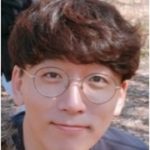 Post-doctoral Fellow (- 2021) Find Junchan on LinkedIn.
Post-doctoral Fellow (- 2021) Find Junchan on LinkedIn.
Dr. Guy Benari, PhD, Technical Staff at MDA (System Design) Post-doctoral Fellow (- 2021) Find Guy on LinkedIn.
Dukhang Lee, PhD (UST, Korea) - Korea Astronomy and Space Science Institute 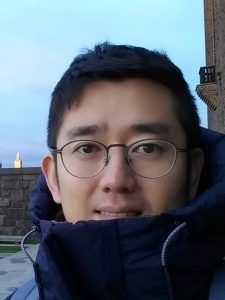 Post-doctoral Fellow (2019) Find Dukhang on LinkedIn.
Post-doctoral Fellow (2019) Find Dukhang on LinkedIn.
Dr. Guy Benari, PhD, Technical Staff at MDA (System Design) Post-doctoral Fellow (- 2021) Find Guy on LinkedIn
Konstantin Bolshakov (MSc, 2020) 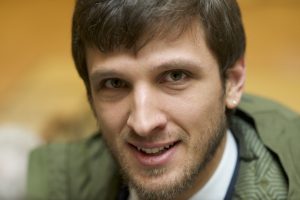 Konstantin is a BEng graduate from York University, specializing in Computer Engineering. He had joined the group when he was an undergraduate student, and has been working on different projects since October 2014. His main interest is electronics: board and chip level hardware design. Konstantin is currently working on a solar cell power production monitoring board as well as a low-cost Sun sensor for a nanosatellite technology demonstration payload. The payload is meant to demonstrate a moth-eye anti-reflective (MEAR) coating for solar cells and how it impacts solar power production on orbit. In his spare time Konstantin plays guitar and practices archery. Find Konstantin on LinkedIn.
Konstantin is a BEng graduate from York University, specializing in Computer Engineering. He had joined the group when he was an undergraduate student, and has been working on different projects since October 2014. His main interest is electronics: board and chip level hardware design. Konstantin is currently working on a solar cell power production monitoring board as well as a low-cost Sun sensor for a nanosatellite technology demonstration payload. The payload is meant to demonstrate a moth-eye anti-reflective (MEAR) coating for solar cells and how it impacts solar power production on orbit. In his spare time Konstantin plays guitar and practices archery. Find Konstantin on LinkedIn.
Breannon Lewis (MSc, 2021)
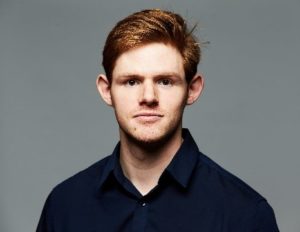 Post-doctoral Fellow (2019) Find Dukhang on LinkedIn.
Post-doctoral Fellow (2019) Find Dukhang on LinkedIn.
Punit Saini
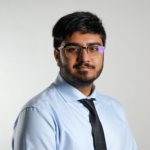 Punit is a fourth-year space engineering student at York University. He is a Certified Solidworks Expert, CSWE, and has experience working with companies in the manufacturing sector. He joined the Resident Space Objects (RSO) Detection and Tracking project in November 2021, as the main 3D CAD designer. His interests lie towards innovations in space exploration and space mining. He is an avid fan of Dungeons & Dragons, with the rest of his hobbies consisting of watching sports (rugby and basketball) and reading about the latest technological advancements. You can find Punit on LinkedIn
Punit is a fourth-year space engineering student at York University. He is a Certified Solidworks Expert, CSWE, and has experience working with companies in the manufacturing sector. He joined the Resident Space Objects (RSO) Detection and Tracking project in November 2021, as the main 3D CAD designer. His interests lie towards innovations in space exploration and space mining. He is an avid fan of Dungeons & Dragons, with the rest of his hobbies consisting of watching sports (rugby and basketball) and reading about the latest technological advancements. You can find Punit on LinkedIn
Jacob Samson
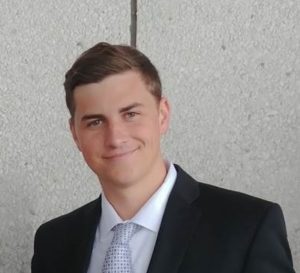 Jacob Samson is in his final year of Space Engineering in Lassonde School of Engineering at York University. He joined the RSO Detection project as an undergraduate research assistant December 2020. His focus revolves around using specialized cameras and standard telescopes to image nanosatellites from the ground. His experience with astrophotography as a hobby is a great asset to his role.
Jacob Samson is in his final year of Space Engineering in Lassonde School of Engineering at York University. He joined the RSO Detection project as an undergraduate research assistant December 2020. His focus revolves around using specialized cameras and standard telescopes to image nanosatellites from the ground. His experience with astrophotography as a hobby is a great asset to his role.
Surabhi Guruprasad (Electronics Engineering) Surabhi completed her undergraduate degree in Electronics Engineering at University of Pune, India. In 2012, she joined the GNSS research group at York University as a Master’s candidate under Professor Sunil Bisnath. In association with Professor Regina Lee, Surabhi has been responsible for the development of software GNSS receivers for satellite applications. On completion of her master’s degree, she decided to continue research and pursue a doctoral degree. Currently in her 4th year of PhD, Surabhi’s research focus is implementation of software GNSS receiver on reconfigurable hardware. She uses Field Programmable Gate Array (FPGA) to demonstrate the ease of reconfigurability of GNSS receiver design resulting in low development costs and time. Her skills and research interests are in the field of signal processing techniques, hardware design, Verilog/VHDL development, embedded systems and integration of hardware and software systems. In her spare time, she likes to travel and explore different cultures from around the world. Find Surabhi on LinkedIn or visit her website.
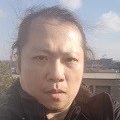 Thomas holds a BEng in Electrical Engineering and a BSc and MSc in Computer Science. His research, based on the neoPascal project, currently focuses on developing scientific instrumentation packages to measure weather and climate variables on Mars utilizing commercial off the shelf technology (COTS). Aspects of this research include sensor network design, low temperature design, orbital communications links, power generation and storage, and more. Thomas's research interests include robotics, computational complexity, and interactive systems. His hobbies include cosmology, astronomy, amateur radio, and electronics.
Thomas holds a BEng in Electrical Engineering and a BSc and MSc in Computer Science. His research, based on the neoPascal project, currently focuses on developing scientific instrumentation packages to measure weather and climate variables on Mars utilizing commercial off the shelf technology (COTS). Aspects of this research include sensor network design, low temperature design, orbital communications links, power generation and storage, and more. Thomas's research interests include robotics, computational complexity, and interactive systems. His hobbies include cosmology, astronomy, amateur radio, and electronics.
Chiti Ran (MSc, 2019), Engineer at at Skygauge 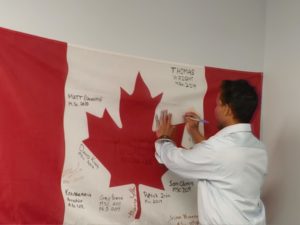

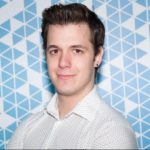 Under graduate research assistant (-2020) Find Fuat on
Under graduate research assistant (-2020) Find Fuat on 